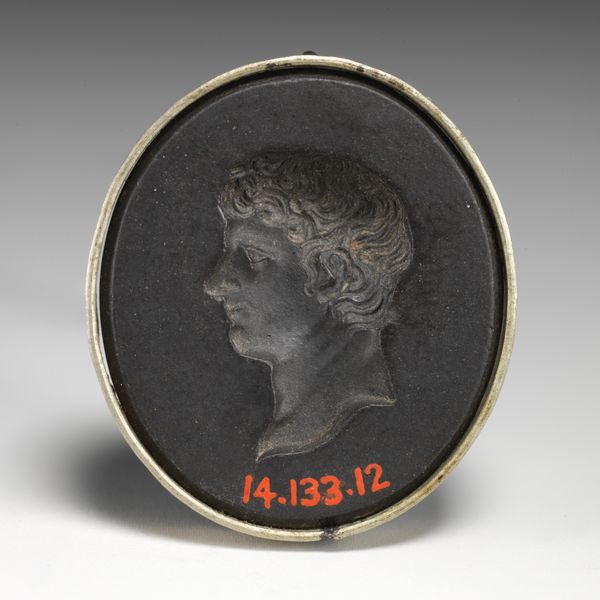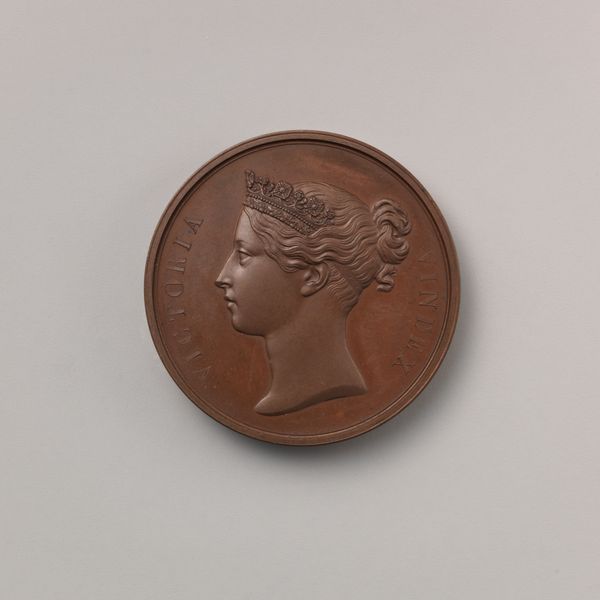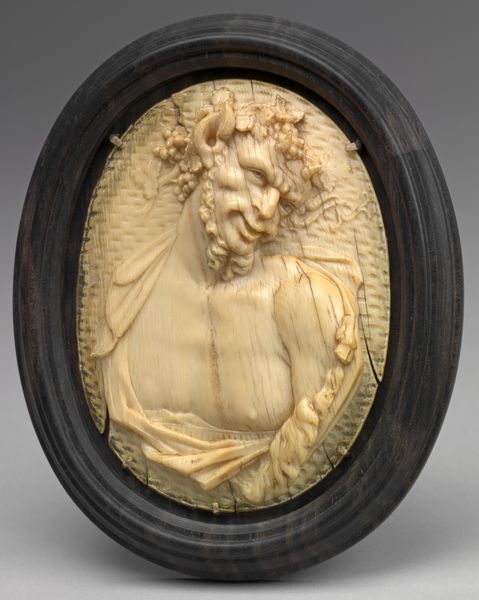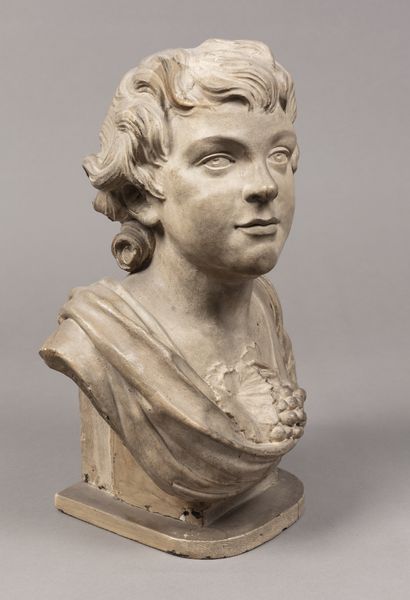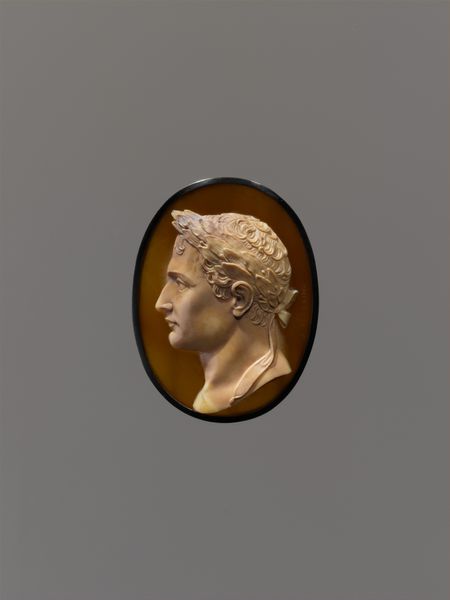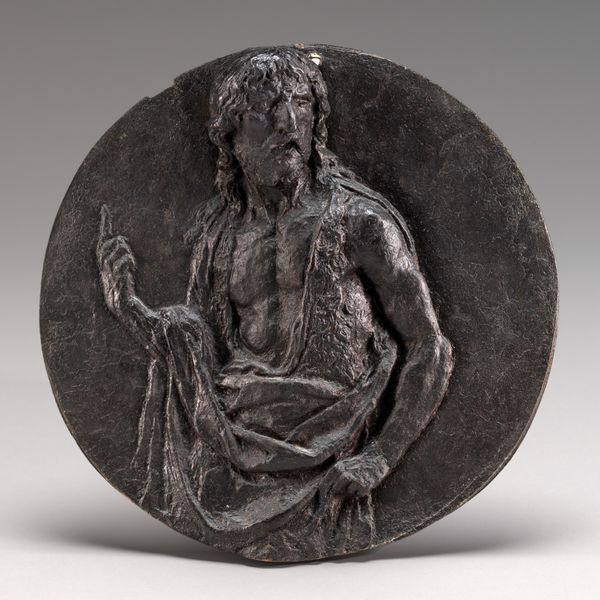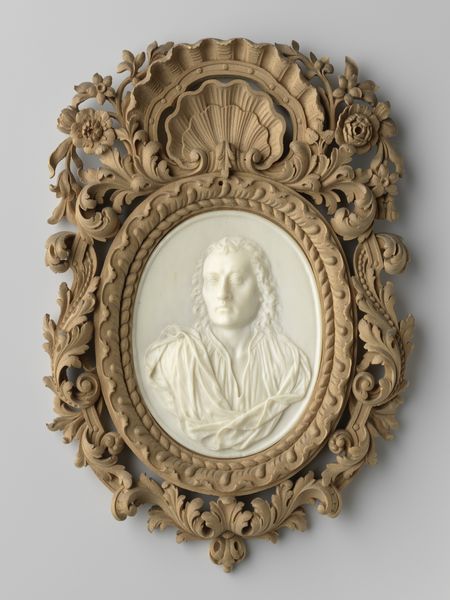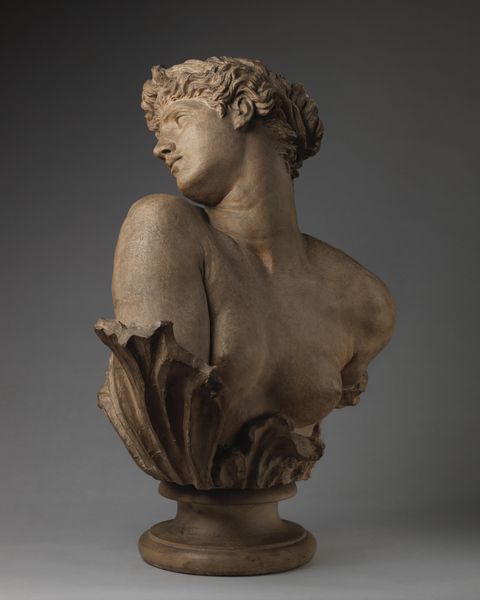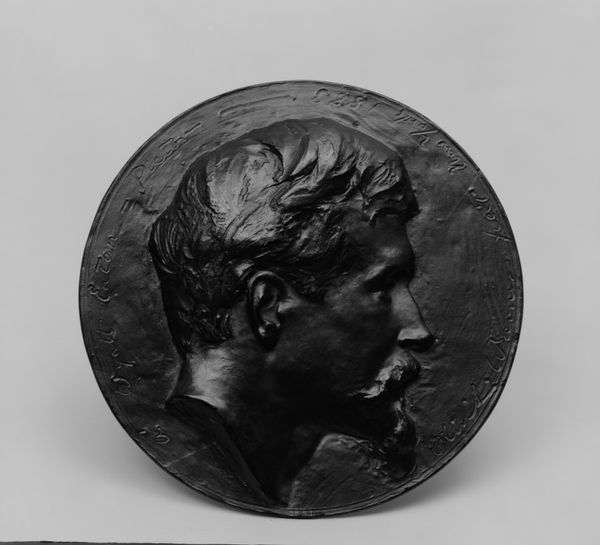
relief, bronze, sculpture, marble
#
portrait
#
baroque
#
sculpture
#
relief
#
classical-realism
#
bronze
#
sculpture
#
marble
Dimensions: height 48 cm, width 42 cm, depth 14 cm
Copyright: Rijks Museum: Open Domain
Editor: Here we have "Oval Medallion with the Head of Bacchus (?)," a marble relief sculpture made around 1715-1730 by Ignatius van Logteren. I’m struck by the soft, almost blurred quality of the carving. What is your impression? Curator: The form is indeed remarkable. Note how the sculptor manipulates depth, particularly around the figure’s hair and within the framing oval. The tight curls create a dynamic interplay of light and shadow, pulling the eye inward. Editor: That contrast gives it so much texture, even though the overall palette is monotone. What purpose does that serve, the play of light and shadow? Curator: Precisely! The baroque aesthetic favored dynamism and emotional expression. The stark contrasts enhance the illusion of depth, vitalizing a relatively shallow relief. Moreover, consider the ovoid format: how does it contain, or perhaps liberate, the figure within? Editor: It feels contained but, yes, that focus also emphasizes the expressiveness of the face. There's something so lifelike in the eyes, the tilt of the head, like it could almost be a real person! Curator: Notice, however, the formal elements that distance it from pure representation. The simplified planes of the face, the stylized treatment of the hair – they remind us that this is, first and foremost, a carefully constructed artifact, an orchestration of form. Editor: So it’s not just about imitating life, but about a particular artistic approach? Curator: Absolutely. Observe the intentional imperfection of the marble; the lines that fracture the surface, and how the colour subtly shifts from salmon to creamy white. It adds a sense of time, decay, beauty. Editor: This formal approach helps understand the time, and even the cultural setting, doesn’t it? Thanks, I never would have looked so closely at the form. Curator: You're most welcome. The artist's intent unfolds itself once we appreciate the composition.
Comments
No comments
Be the first to comment and join the conversation on the ultimate creative platform.

